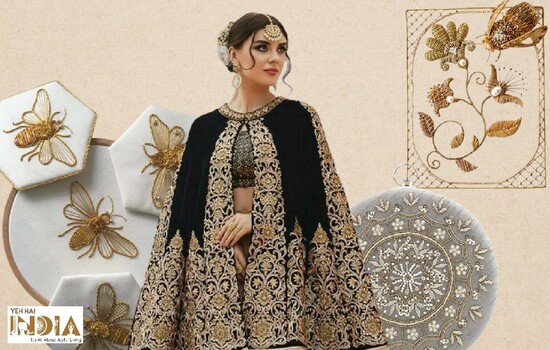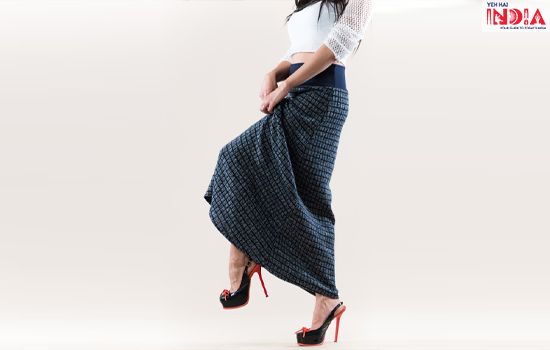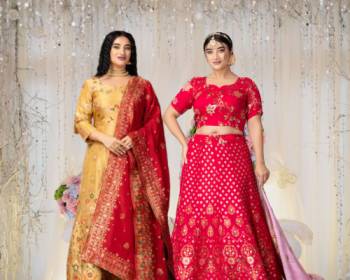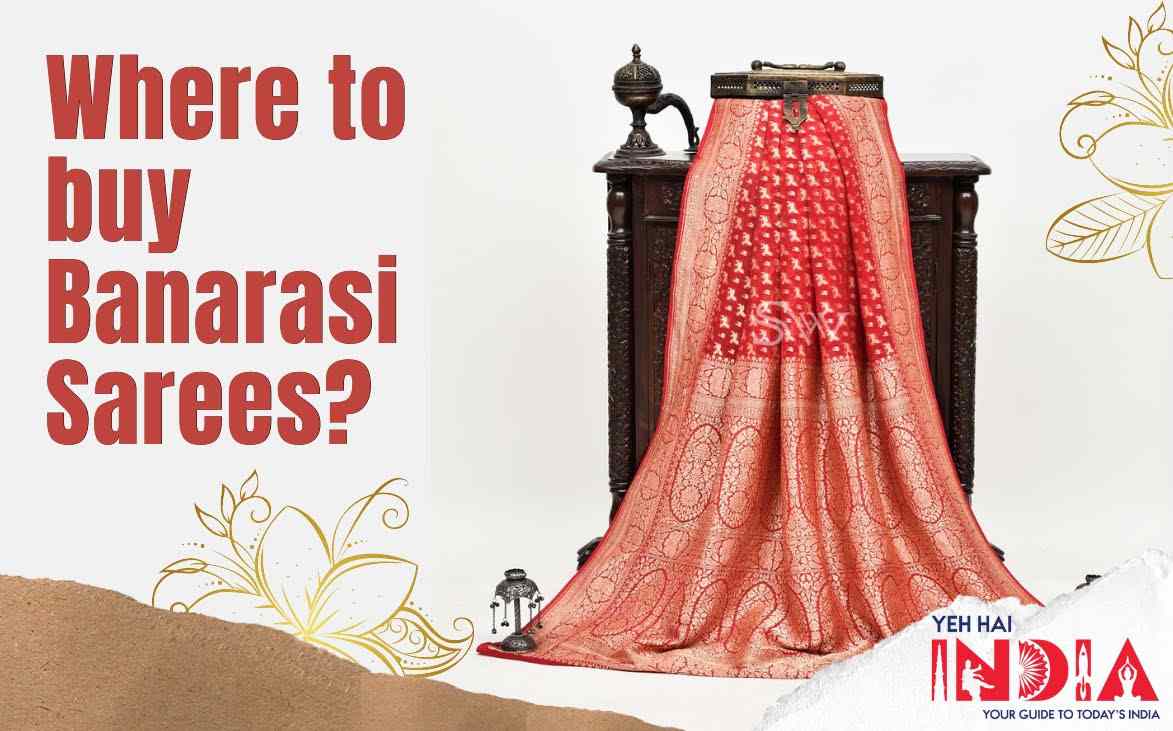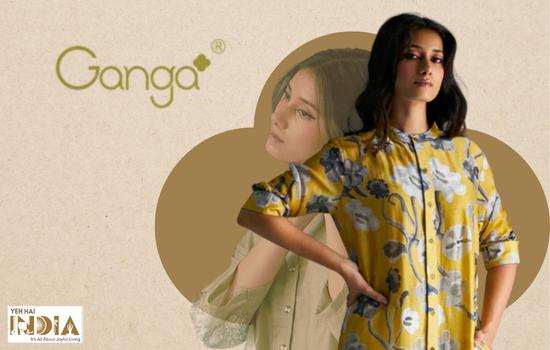Zardozi is known all over the world as the most exquisite form of embroidery work reserved only for the royals in ancient times.
Zardozi is a regal Indian-Iranian hybrid style of embroidery that once adorned the livery of Kings. The word Zardozi comes from two Persian words. The word zar refers to ‘gold’ and the word dozi means ‘to sew’.
The embroidery style is very aptly named as Zardosi involves heavy and intricate metal embroidery on a base fabric made of silk, satin or velvet.
The designs are created with gold and silver thread and often precious stones, beads, pearls and other decorative elements are added.
Although traditionally real silver and gold thread were used for zardozi fabric, today, craftsmen tend to use copper wires with silver and gold varnishes along with silk thread instead.
While this is due to the lack of availability of large quantities of silver and gold thread, it has also made Zardozi textiles much more accessible.
Zardozi fabric can be found in a lot of places including everything from clothing to household textiles to animal trappings. Historically, it was used to decorate the belongings of the aristocracy.
The royal tents, hangings, scabbards and even draperies of the royal elephants and horses were embroidered in the delicate Zardozi style.
Zardozi Embroidery History
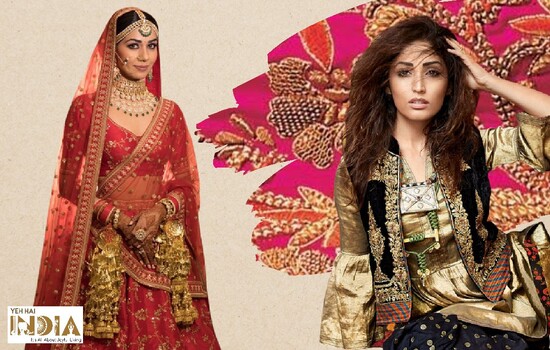
The earliest documented use of gold embroidery in India comes from Rigveda. This means that gold embroidery has been practised in India for 3500 years now.
In 1300, people who worked with precious metals and stones to embroider them into fabric were known as Zardos. Zardozi fabric was used in everything from royal livery to ornamentation of the statues of God.
Gold embroidery’s most prosperous era was during the reign of the Mughal Emperor Akbar in the 17th century. However, due to the loss of royal patronage under the rule of Mughal Emperor Aurangzeb, gold embroidery began to decline.
It was impossible for craftsmen to carry on the craft as the raw materials became rarer and more expensive.
Delhi, which had been a centre of Zardozi craft, soon bid farewell to large amounts of the craftsmen as they migrated to Punjab and Rajasthan in search of work.
Industrialization and the impossible pace set by factory-made fabric was another huge blow to Zardozi craft and it declined further.
But with India’s independence would come a resurgence in all of its indigenous art and craft. Zardozi embroidery proved to be no different.
The Indian government took steps to promote it and it steadily gained prominence in the Indian cities of Lucknow, Hyderabad, Farrukhabad, Chennai and Bhopal.
Since 2013, the Lucknow Zardozi has been considered a Geographical Indication. This means that manufacturers of Zardozi in Lucknow and the surrounding districts of Unnao, Barabanki, Sitapur, Hardoi, Rai Bareilly and Amethi carry a unique brand demarcating their products as authentic Zardozi.
Recommended Story – Hemp Clothing: Health Benefits of Clothes Crafted From Hemp Fibre!
Zardozi Embroidery Process
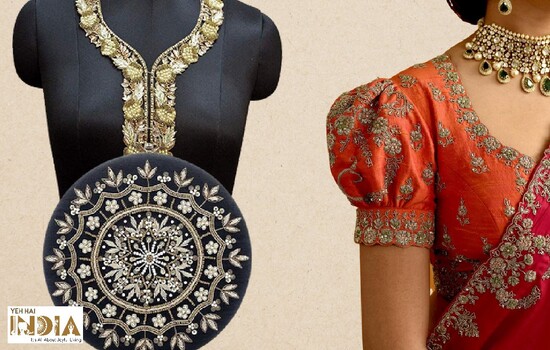
Zardozi embroidery requires tools like curved hooks, gold wires (also known as salma pieces), needles, metal stars (also known as sitaras), round sequins, thread and glass and plastic beads, any other decorative elements and lastly, the Addaa, a wooden framework upon which Zardozi embroidery is made.
First, a craftsman sits cross-legged around the Addaa and lays the fabric over it gently, preferably a substrate like silk, satin or velvet. Then the design is traced out on the fabric and this is when the embroidery work begins.
The fabric is then stretched out and held taut on the wooden framework and then needles are used to incorporate zardozi elements into the fabric.
The wires of copper, silver or gold are thinned to suit the design. A base coloured thread is used to trace the design and then the metal threads are added on top of it.
The embroidery is beaten so that it sets into the fabric completely. The fabric is rinsed off to remove any stencil marks.
Another method used is the Aari stitch which uses a specially built needle. This needle has a sharpened base and a broad wooden holder. The base thread is coiled inside the broad end of the needle.
The pearls, gems and other decorative elements are attached to the needle one by one, making the process of Zardozi embroidery easier if more time-consuming. The Aari technique is used mostly in households and other non-commercial centres of Zardozi.
Variations on Zardozi
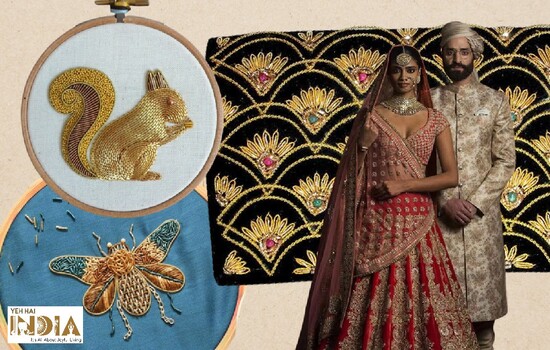
Zardozi embroidery is also an integral part of Persian culture. It is found mostly in the province of Hormozgan with exceptional popularity in the cities of Minab, Bandar-e-Lenge and Bandar-e-Abbas.
Although like with Indian Zardozi, Persian Zardozi has infinite variations, it tends to be of three main kinds. In the first kind, the base fabric is completely sewn with sutures in order to produce unorthodox designs and colours.
In the second kind, the design tends to be less dense. The strings are crossed over the fabric over and over again in order to create a latticework-like design.
The last method is the most similar to Indian craft with designs sewn onto the fabric with gold and silver strings.
Today, Zardozi embroidery is popular all over the world, especially in the United States, Australia, the United Kingdom, Dubai, Canada and the Middle Eastern Countries.
It is used to adorn both clothes like salwar suits, lehengas and other traditional wear as well as accessories like handbags. Zardozi patterns are often inspired by and imitate the night sky and other natural motifs such as floral patterns.
How to care for Zardozi embroidered fabrics?
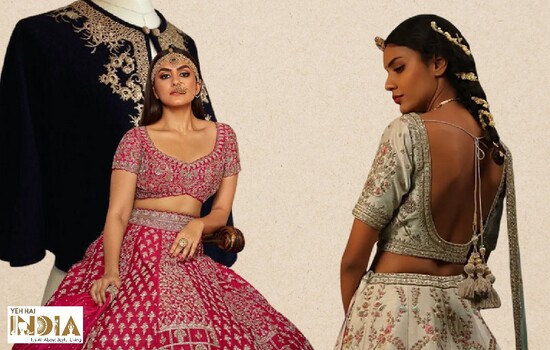
Zardozi fabric is extremely delicate and should be treated with care. It should only be dry washed as any rigorous washing may create breakage in the wires.
Ironing should strictly be avoided in order to retain the glimmer and colour of the metal embroidery.
Zardozi art is a jewel in the crown of India when it comes to stunning indigenous artwork. Once, only patronized by the royals, today, Zardozi work can be worn by anyone on any occasion.
Although the centres of Zardozi in and around Lucknow are thriving, it falls to us to keep the art form alive and make sure that it spreads all over India.
Give yourself and your home an ethnic makeover with zardozi embroidered artefacts and costumes for a touch of royal elegance.
Also Read – Love Embroideries? Checkout the 14 Exquisite Embroideries of India


